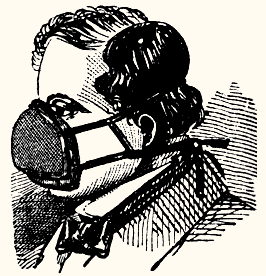As someone who has spent decades navigating the complexities of asbestos regulations, we recognize that clarity, practicality, and worker protection must be at the core of any regulatory update. Occupational Safety and Health Administration’s (OSHA's) recent proposal to revise certain respirator-related provisions within the asbestos construction standard (29 CFR 1926.1101) attempts that but it’s important for all of us in the industry to carefully evaluate how these changes impact worker protection, especially concerning respirator requirements.
 |
| Confusion about the 9/11 type of respirator/filter to wear |
Three proposed changes stand out to us as potentially problematic:
1. Removing the HEPA Filter Requirement
For decades, HEPA filters have been the gold standard for respirators, protecting workers from asbestos fibers. The current OSHA standard mandates HEPA filters (P100 filters) on all powered and non-powered air-purifying respirators to ensure maximum filtration efficiency.
OSHA’s proposal to eliminate this specific HEPA filter requirement, citing updated National Institute for Occupational Safety and Health (NIOSH) certification standards (42 CFR part 84), raises questions. While newer filter types may meet certification requirements, HEPA filters’ proven reliability and high filtration efficiency have been foundational in asbestos protection.
The risk here is that removing the HEPA filter mandate could lead to the use of less effective filters (N95s) or confusion over filter equivalency, ultimately compromising worker safety. The asbestos hazard is too severe to accept any uncertainty about filter performance.
2. Replacing Supplied-Air Respirators with PAPRs
Current OSHA standards require supplied-air respirators (SARs) operated in pressure-demand mode with an auxiliary positive-pressure self-contained breathing apparatus (SCBA) backup for exposures exceeding 1 (one) fiber per cubic centimeter (f/cc). The proposed change to this section would replace the specific respirator requirement (SAR/SCBA, with an Assigned Protection Factor (APF) of 1,000) with a requirement to provide a respirator with a minimum APF of 1,000. That would include a full-face Powered Air Purifying Respirator (PAPR) and helmet/hood PAPR (having manufacturer test evidence to support an APF of 1,000).
For high-level asbestos exposures, this shift is concerning. Supplied-air respirators provide a higher level of protection against variable airborne fiber concentrations, and the SCBA backup is critical for emergency scenarios. Moving to PAPRs risks lowering the safety margin in situations where asbestos concentrations spike unexpectedly.
 |
| Workers wearing PAPRs |
3. Replacing PAPRs with Full Facepiece APRs
Another change to the current standard includes providing a tight-fitting powered air-purifying respirator (APF 1,000) or a full facepiece, supplied-air respirator operated in the pressure-demand mode, and equipped with either HEPA egress cartridges or an auxiliary positive-pressure, self-contained breathing apparatus (SCBA) (APF 1,000) for exposure levels at or below 1 f/cc. The proposed change would require employers to provide a respirator that has a minimum of an APF 50. This would allow the use of a full-facepiece air purifying respirator (APR). This is definitely not an increase in protection; it is a significant reduction of protection.
Why These Concerns Matter
Asbestos remains one of the most hazardous occupational exposures, with no safe level of exposure (according to the World Health Organization (WHO) and the Environmental Protection Agency (EPA)). Respiratory protection is the last line of defense when engineering and work practice controls cannot fully eliminate airborne fibers.
Standards must err on the side of maximum protection, not convenience or cost savings. Removing the HEPA filter requirement, substituting SARs with PAPRs, and PAPRs for full facepiece APRs for high-exposure Class I asbestos work would reduce protection levels at a time when new asbestos exposures still occur daily, and there are questions about whether the current permissible exposure limit is low enough.
 |
| Respirator Protection Types |
What Are the Key Changes?
Replacing Specific Respirator Types with APF-Based Selection: Instead of mandating exact respirator models, employers will select respirators that meet or exceed required APFs (e.g., minimum APF of 50 or 1,000, depending on exposure scenarios).
Removing Redundant Provisions: OSHA is proposing to eliminate duplicative language in asbestos standards that overlaps with general respiratory protection requirements, simplifying the rules without adding burdens.
Updating Filter Requirements: The current HEPA filter mandate for air-purifying respirators is being reconsidered because NIOSH’s certification has evolved, allowing other certified particulate filters that offer equivalent protection. The fact is that asbestos is not like any other particulate. Because of the aerodynamics of the fiber and the size of the fibers, which can cause disease. N95s do not provide equivalent protection to a HEPA filter.
Training Requirements Streamlined: OSHA intends to reduce duplicative respirator training provisions, relying more on the general respiratory protection standard’s comprehensive training requirements.
 |
| Asbestos Training Class |
What Is OSHA Seeking From the Public?
OSHA is actively requesting comments on several points, including:
- Concerns about potential decreases in worker safety from these proposed changes.
- Alternative approaches to respirator provisions.
- The practicality and frequency of employees requesting PAPRs.
- Whether removing certain asbestos-specific provisions might lessen protections.
- The appropriateness of lifting the prohibition on filtering facepiece respirators.
- Employers' experiences with duplicative training requirements.
Final Thoughts
We support OSHA’s goal to update asbestos standards to reflect advances in technology and reduce unnecessary compliance burdens. However, changes to respirator requirements must be grounded in solid evidence and prioritize worker health above all.
OSHA’s proposal is a critical opportunity for industry stakeholders to weigh in. We must ensure that any revisions do not erode decades of hard-earned protection for workers facing asbestos hazards.
If you work with asbestos or manage respiratory protection programs, we urge you to review OSHA’s proposal carefully and submit comments highlighting these concerns before the comment period closes on November 1, 2025.










































